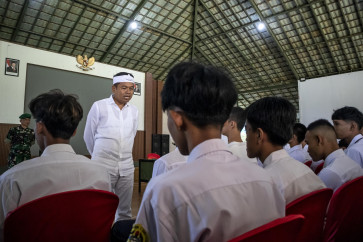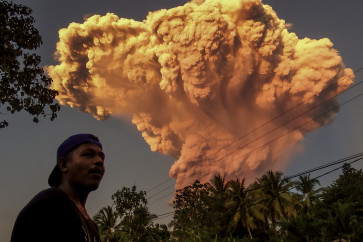Popular Reads
Top Results
Can't find what you're looking for?
View all search resultsPopular Reads
Top Results
Can't find what you're looking for?
View all search resultsYour letters: Science journalism at a glance
It was a grey morning
Change text size
Gift Premium Articles
to Anyone

I
t was a grey morning. I was working at my desk when a rather worrying thought struck me: I wondered where the research results would end up, after the research had been completed.
As a librarian in the Center for Scientific Documentation and Information where all Indonesian scientific journals are stored, I was wondering how the research results were disseminated aside from being written in the form of research reports and scientific articles published in scientific journals.
The thought along with some unanswered questions led me to an intriguing subject: science journalism.
In its simplest definition, science journalism is science reporting to the public. It deals with results, institutions and processes in science, technology and medicine (Wormer 2008).
It is an open secret that in Indonesia science does not belong to everyone yet. The sci-tech sections in newspapers and magazines are merely about the latest gadgets, the smartest smartphones, the newest look of social networking services et cetera. Real science and technology results from researches are not covered in the media.
A sample of interesting cases about science reporting is when Yosmina Tapilatu, a young researcher from Marine Life Conservation Unit Ambon ' Indonesian Institute of Sciences, won L'Oreal-UNESCO for Women in Science award. The news had blown up due to the widespread media coverage.
All of a sudden people are aware of the research studies done by Yosmina Tapilatu about marine bacteria. If she did not win the aforementioned award who will be aware of it?
As a subject analyst (librarian), I deal with scientific papers every single day. It is heartbreaking to notice that almost all research results end up in scientific journals, which means: can be accessed only by academicians, not by so-called common people.
For instance, the research conducted by my fellow researchers about cassava comprising high beta-carotene and protein for healthy food (from research center for biotechnology ' Indonesian Institute of Sciences) and about composite products from rice husk and oil palm frond fibers (from research and development unit for biomaterials ' Indonesian Institute of Sciences) are left unknown. The public have no idea that there are Indonesian researchers who have been working on those topics.
Once I interviewed a journalist working for a daily newspaper in Jakarta about science journalism. And I was deeply shocked by the fact that he was not even aware of the term 'science journalism'. After I explained it in brief, he told me that there were no science journalists at his workplace.
All journalists were expected to be able to write about all subjects, including sci-tech coverage.
The term 'science journalists', however, is not that important as long as the news about sci-tech research conducted in Indonesia is covered well. Through being covered in science and technology sections of newspapers, science will eventually belong to the public.
Swistien Kustantyana
Jakarta








